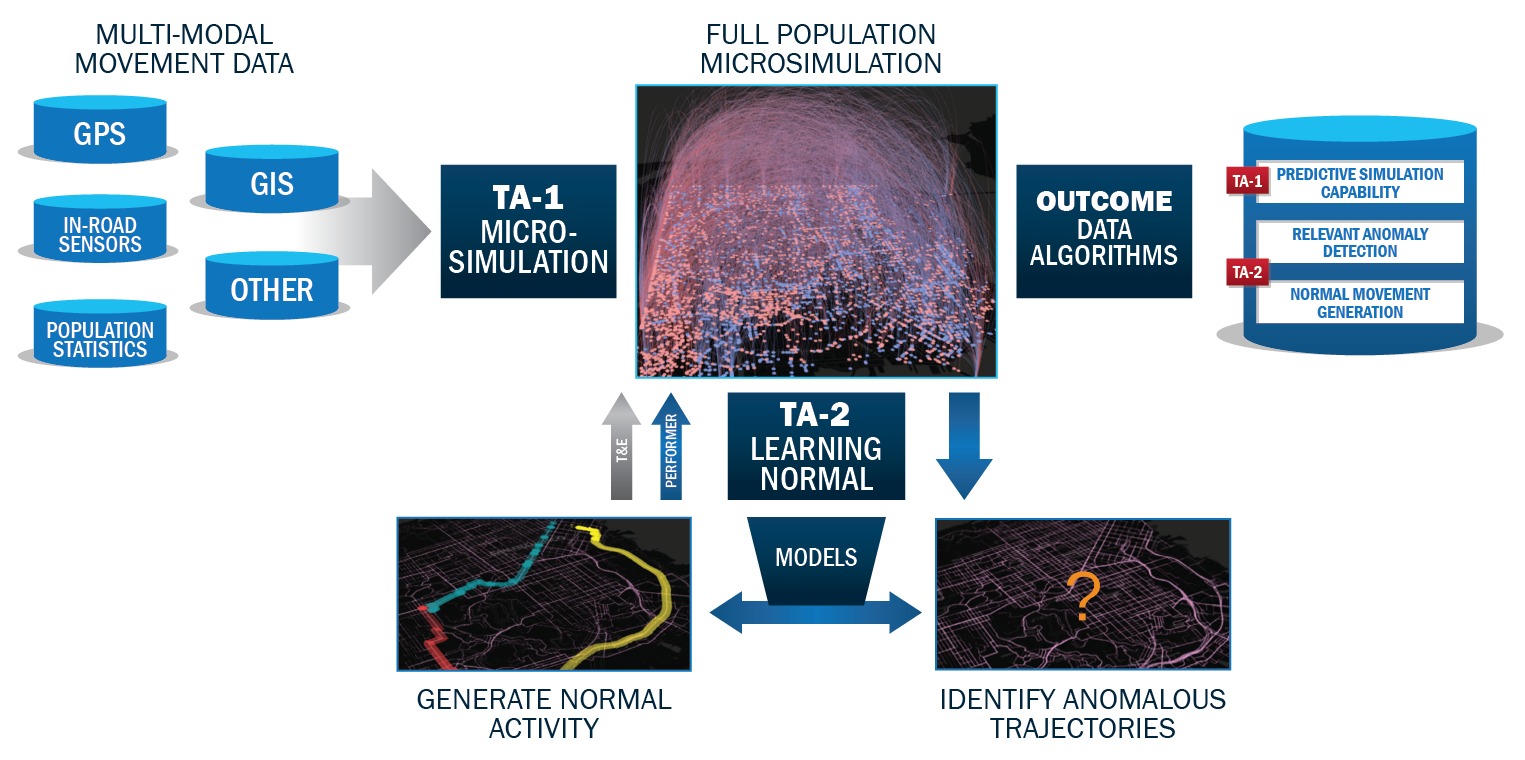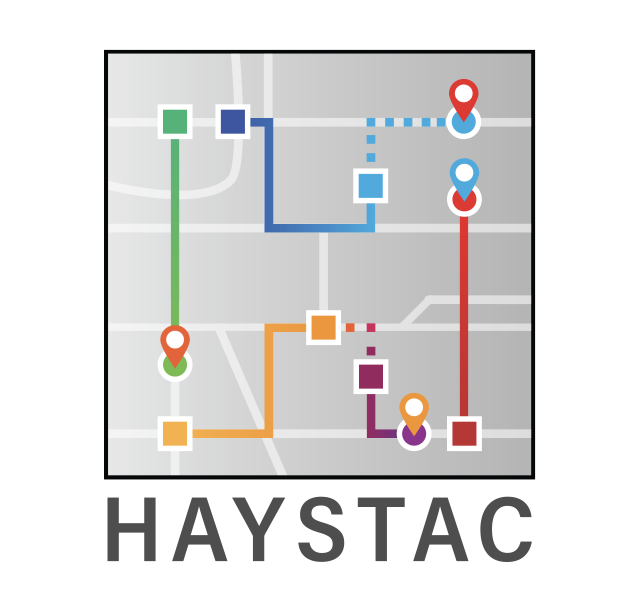Intelligence Value
HAYSTAC aims to establish models of “normal” human movement across times, locations, and people in order to characterize what makes an activity detectable as anomalous within the expanding corpus of global human trajectory data. Success will establish the scientific foundation connecting data, movement, and the expectation of privacy.
Summary
The Internet of Things and Smart City infrastructures has led to an explosion of data and insight into how people move. This offers the opportunity to build new models that understand human dynamics at unprecedented resolution, which creates the responsibility to understand the expectation of privacy for those moving through a sensor-rich world. However, today’s modeling capabilities focus only on high level dynamics to study population migration, disease spread, or other highly aggregated properties. They cannot capture the fine-grained activities of human life and transportation logistics that drive daily trajectories of movement.
The key limitation in achieving this goal of understanding normal movement at a fine-grained level is the lack of ground-truthed movement datasets to fuel artifical intelligence developments in trajectory understanding. HAYSTAC teams will address this by (1) creating a large-scale microsimulation of background activity and associated trajectories; (2) inserting specific movement activity into the simulation; and (3) attempting to separate inserted activity from the background activity.
By executing this sequence as recurring “trials” in which multiple teams compete to identify what trajectories are generated from activity that was inserted by other teams, successful HAYSTAC systems will be capable of identifying trajectories created by subtle deviations against normal while also being able to generate activity and corresponding trajectories which are not distinguishable from normal. This deep characterization of normal movement separates anomalous movement from that which maintains an expectation of privacy.
The HAYSTAC program will pursue these goals over a four-year period, broken into three phases (18 months, 18 months, 12 months). As the HAYSTAC systems mature, they will be evaluated based on probability of detection and false alarm performance in creating relevant alerts, ultimately seeking to identify 80% of anomalous activity while generating normal activity that is only 10% detectable.

Overview of the HAYSTAC Program Concept – leveraging microsimulation and a competitive structure to create rich datasets and robust trajectory analytics.
Former HAYSTAC PM Dr. Jack Cooper talks about Human Movement, including why we model these movements and the importance of understanding privacy, data and human movement.

